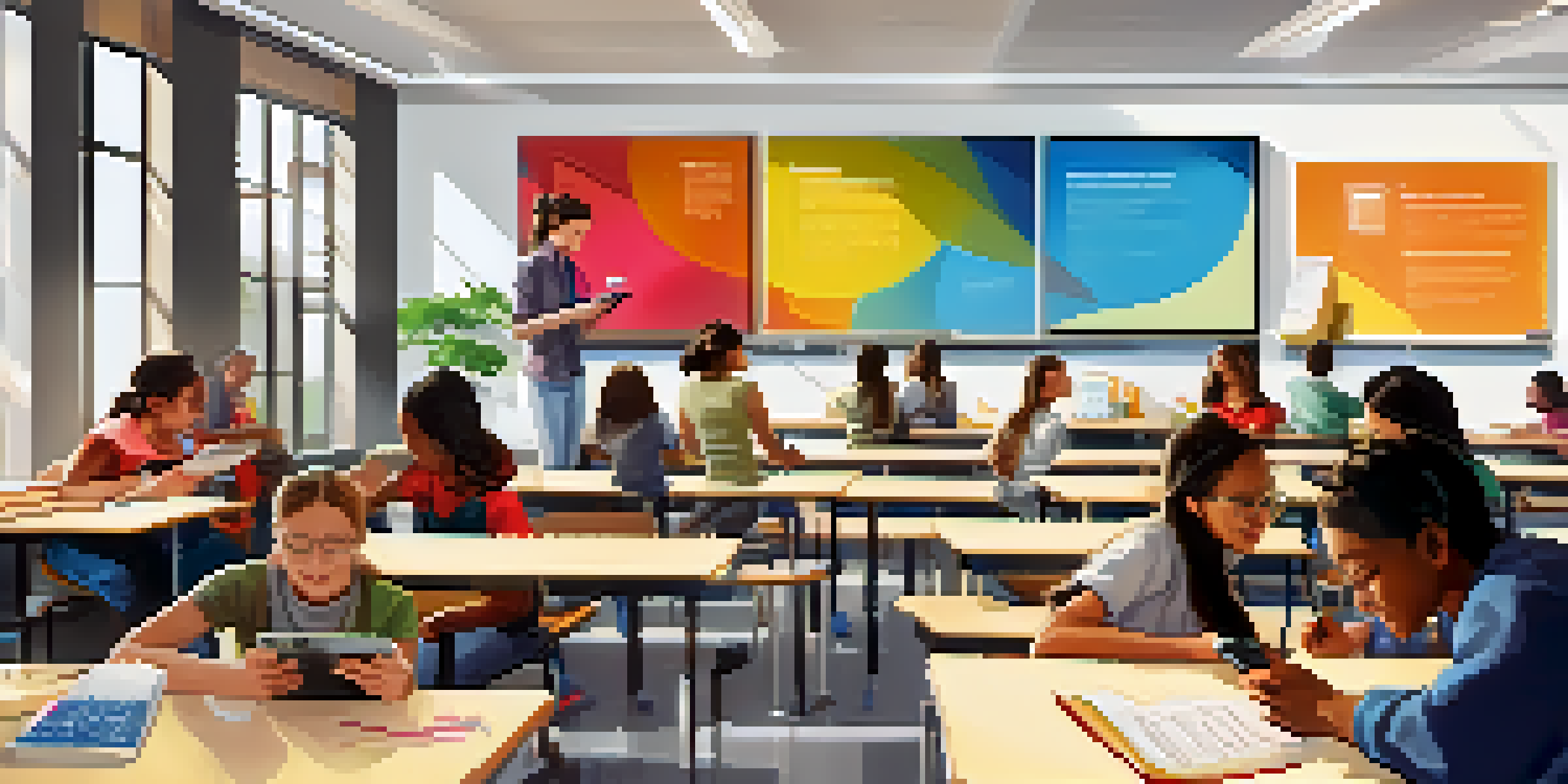Mobile Learning Strategies for Engaging Students Effectively

Understanding Mobile Learning and Its Importance
Mobile learning, or m-learning, refers to educational experiences on mobile devices, allowing students to learn anywhere. This flexibility is crucial in today's fast-paced world, where traditional classroom settings may not always be feasible. With the rise of smartphones and tablets, integrating mobile learning into educational strategies has become essential for engagement.
The great thing about mobile learning is that it puts the power of education in the hands of the learner, allowing them to choose when and where they learn.
One of the primary reasons mobile learning is important is that it meets students where they are. Many learners prefer using their devices to access information and complete assignments. By leveraging this trend, educators can create more relevant and appealing learning experiences.
Related Resource
Moreover, mobile learning fosters a sense of autonomy and self-directed learning. Students can explore subjects of interest at their own pace, which can lead to deeper understanding and retention of knowledge. This empowerment helps to cultivate a more engaged and motivated learner.
Incorporating Interactive Content for Engagement
Interactive content, such as quizzes, polls, and simulations, can significantly enhance mobile learning experiences. These elements encourage active participation, turning passive consumption of information into an engaging and dynamic process. For instance, using a quiz app to test knowledge after a lesson can reinforce learning and provide immediate feedback.

Additionally, interactive content can cater to various learning styles. Visual learners might benefit from infographics, while kinesthetic learners may prefer hands-on activities. By offering a mix of content types, educators can appeal to a broader audience and maintain high levels of engagement.
Mobile Learning Enhances Accessibility
Mobile learning allows students to access educational content anytime and anywhere, catering to their busy lifestyles.
Moreover, the immediacy of mobile devices allows for real-time interaction among students and teachers. Discussion boards or live chats can facilitate collaboration and foster a sense of community, further enhancing motivation and participation.
Utilizing Gamification to Boost Motivation
Gamification involves integrating game elements into learning activities to increase motivation and engagement. This can include point systems, badges, and leaderboards that encourage students to strive for achievements. For example, a language learning app might reward users with badges for completing lessons, making the learning experience feel more rewarding.
Education is not the filling of a pail, but the lighting of a fire.
The competitive element of gamification can drive students to take ownership of their learning. When learners see their progress visually represented, they often feel more motivated to continue improving. This sense of achievement can lead to a more invested and enthusiastic approach to education.
Related Resource
Furthermore, gamification can help create a fun and enjoyable learning environment. By turning lessons into games, students may be more inclined to participate and less likely to view learning as a chore. This positive association can lead to a lifelong love for learning.
Creating Bite-Sized Learning Modules
Bite-sized learning, or microlearning, refers to breaking down information into small, manageable chunks. This approach is particularly effective for mobile learning, as students can easily consume content during short breaks or commutes. Just like snacking instead of having a full meal, bite-sized modules cater to busy lifestyles.
Each learning module can focus on a specific topic, making it easier for students to digest and retain information. For instance, instead of one lengthy lecture, a teacher might create several short videos covering different aspects of the subject. This segmentation helps prevent information overload and keeps learners engaged.
Interactive Content Boosts Engagement
Incorporating quizzes and simulations into mobile learning encourages active participation and caters to diverse learning styles.
Moreover, bite-sized learning can be easily integrated into various mobile platforms, making it accessible anytime and anywhere. Students can revisit these short modules whenever they need a refresher, reinforcing their understanding and boosting confidence.
Encouraging Collaboration Through Mobile Tools
Mobile learning can foster collaboration among students, enhancing their learning experiences. Tools such as shared documents, group chats, and collaborative apps allow learners to work together seamlessly, regardless of their physical locations. This level of collaboration mirrors real-world teamwork, preparing students for future professional environments.
By encouraging group projects or peer reviews through mobile platforms, educators can help students develop essential communication and social skills. These interactions not only boost engagement but also promote a sense of accountability among peers. Students may feel more motivated to contribute when they know their classmates are relying on them.
Related Resource
Furthermore, collaborative learning allows for diverse perspectives, enriching the educational experience. When students engage with others, they can gain insights that may not be available in traditional settings, leading to a deeper understanding of the subject matter.
Leveraging Social Media for Learning Engagement
Social media can be a powerful tool for mobile learning, providing platforms for students to share ideas and resources. By creating dedicated groups or using hashtags, educators can facilitate discussions on relevant topics and encourage peer-to-peer learning. This informal setting may lead to increased participation and a more relaxed environment for students to express their thoughts.
Moreover, using social media for educational purposes can bridge the gap between formal and informal learning. Students often feel more comfortable engaging with content on platforms they already use, making learning feel more relatable. For example, a teacher might use Instagram to post daily challenges or discussion prompts related to the curriculum.
Gamification Increases Motivation
Integrating game elements into learning activities fosters motivation and creates a fun, engaging educational environment.
However, it's essential to establish guidelines for appropriate use to ensure a positive learning experience. By providing structure, educators can harness the benefits of social media while minimizing distractions and potential negative interactions.
Monitoring Progress with Mobile Analytics
Mobile analytics tools can provide valuable insights into student engagement and learning outcomes. By tracking metrics such as completion rates, time spent on tasks, and quiz scores, educators can identify patterns and areas for improvement. This data-driven approach allows for more personalized learning experiences tailored to individual student needs.
For instance, if analytics reveal that a particular module has a low completion rate, educators can investigate potential reasons and adjust the content accordingly. This responsiveness ensures that students receive the support they need to succeed, ultimately fostering a more engaging learning environment.

Additionally, sharing progress with students can empower them to take charge of their learning journeys. When students see their achievements reflected in data, they may feel more motivated to set goals and strive for improvement. This sense of ownership can lead to increased engagement and academic success.